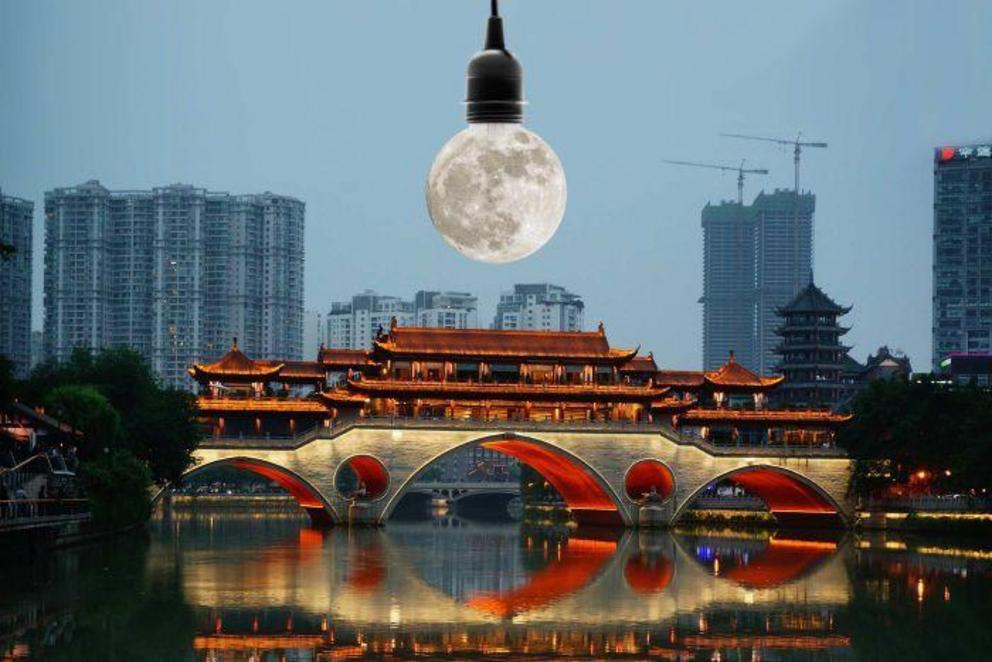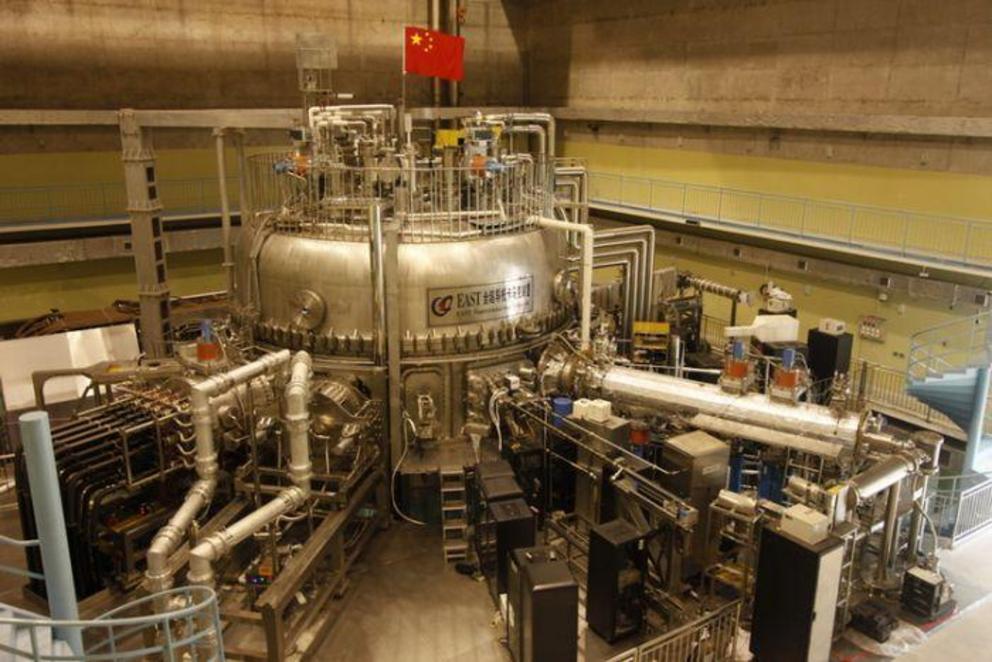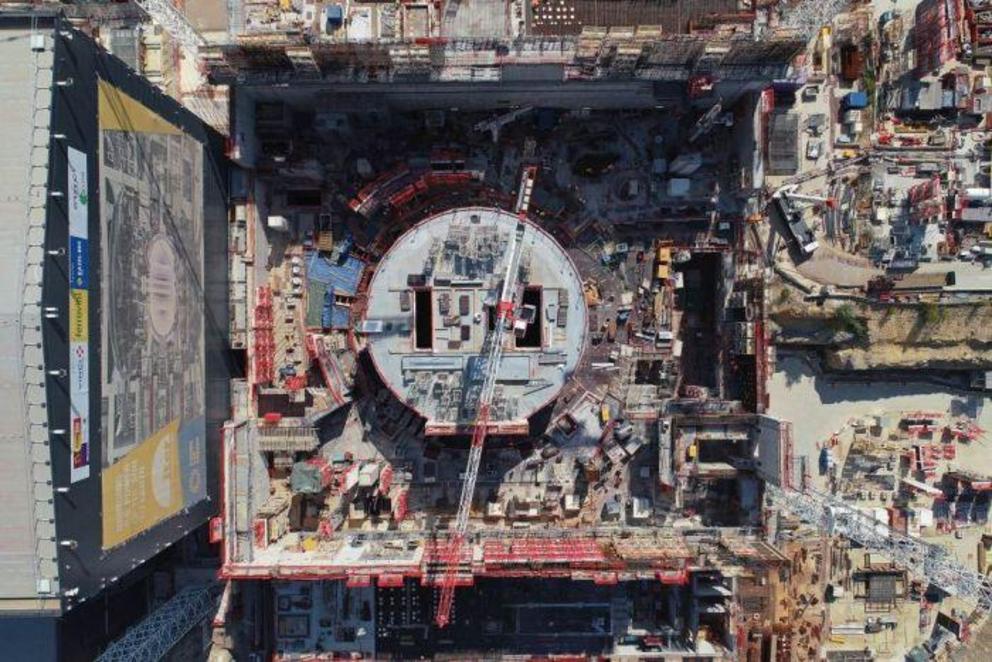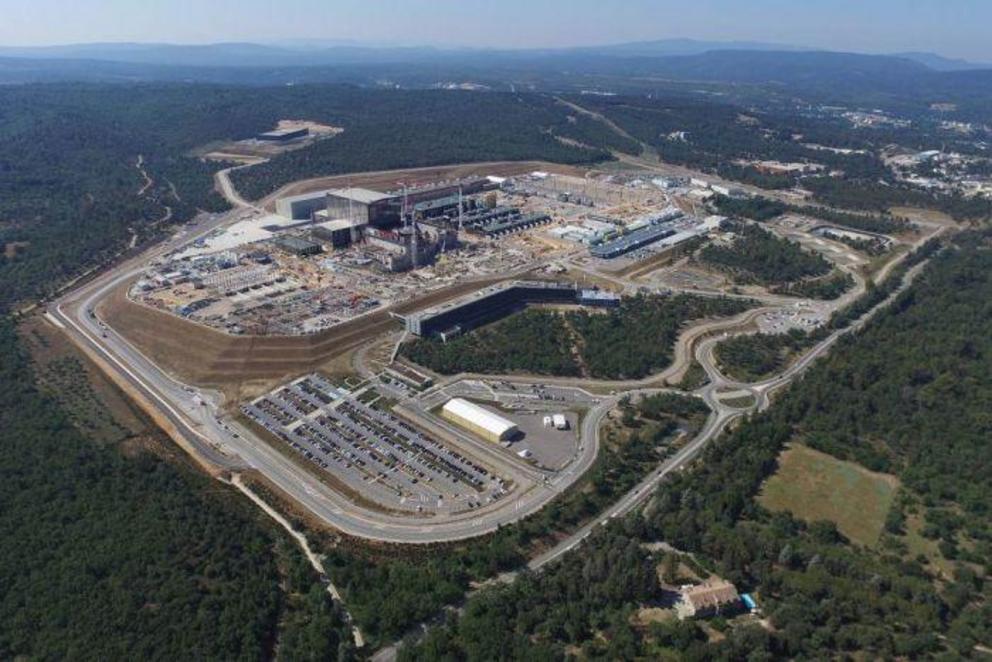China's 'artificial sun' reaches 100 million degrees celsius marking milestone for nuclear fusion
Chinese nuclear scientists have reached an important milestone in the global quest to harness energy from nuclear fusion, a process that occurs naturally in the sun.
Key points:
- The "artificial sun" is designed to replicate the fusion process that occurs in the sun
- Dr Matthew Hole said the achievement is significant for fusion science around the world
- Fusion is seen as a solution for energy issues as it is clean, sustainable and powerful
The team of scientists from China's Institute of Plasma Physics announced this week that plasma in their Experimental Advanced Superconducting Tokamak (EAST) — dubbed the "artificial sun" — reached a whopping 100 million degrees Celsius, temperature required to maintain a fusion reaction that produces more power than it takes to run.
To put that in perspective, the temperature at the core of the sun is said to be about 15 million degrees Celsius, making the plasma in China's "artificial sun" more than six times hotter than the original.
The news comes after China shocked the science community last month with plans to launch an "artificial moon" bright enough to replace city streetlights by 2020.
 Chinese scientists plan to send three artificial moons into space in the next four years.
Chinese scientists plan to send three artificial moons into space in the next four years.
Speaking to the ABC, associate professor Matthew Hole from the Australian National University said the achievement was an important step for nuclear fusion science.
"It's certainly a significant step for China's nuclear fusion program and an important development for the whole world," Dr Hole said, adding that developing fusion reactors could be the solution to global energy problems.
"The benefit is simple in that it is very large-scale base load [continuous] energy production, with zero greenhouse gas emissions and no long-life radioactive waste.
"It provides a silver bullet energy solution … providing that one can harness it."
He added that nuclear fusion reactors also avoid risks associated with the currently employed nuclear fission reactors, which can be adapted into dangerous weapons and are prone to possible catastrophic meltdowns.
The news went viral on Chinese social media, with most users excited by the achievement.
"There is nothing China can't make," one user on Weibo said.
Another proclaimed that "if this technology is put in use, the world will no longer feel anxious about the energy crisis".
So how did China manage to pull it off?
 China's Experimental Advanced Superconducting Tokamak (EAST), dubbed the "artificial sun".
China's Experimental Advanced Superconducting Tokamak (EAST), dubbed the "artificial sun".
While current nuclear power plants rely on nuclear fission — a chain reaction where uranium atoms are split to release energy — nuclear fusion effectively does the opposite by forcing atoms to merge.
One way of achieving this on Earth is by using what's known as a tokamak, a device designed to replicate the nuclear fusion process that occurs naturally in the Sun and stars to generate energy.
The EAST that pulled off the 100 million Celsius feat stands at 11 metres tall, has a diameter of 8 metres and weighs about 360 tonnes.
 High-powered magnets line the "doughnut shaped" inside of EAST.
High-powered magnets line the "doughnut shaped" inside of EAST.
It uses a ring to house heavy and super-heavy isotopes — atomic variations — of hydrogen known as deuterium and tritium.
The isotopes are heated by powerful electric currents within the tokamak, tearing electrons away from their atoms and forming a charged plasma of hydrogen ions.
Powerful magnets lining the inner walls of EAST then contain the plasma to a tiny area to maximise the chance that the ions will fuse together.
When the ions fuse they give off a large amount of energy, which can then be harnessed to run a power plant and produce electricity.
The Chinese research team said they were able to achieve the record temperature through the use of various new techniques in heating and controlling the plasma, but could only maintain the state for about 10 seconds.
The latest breakthrough provided experimental evidence that reaching the 100 million degrees Celsius mark is possible, according to China's Institute of Plasma Physics.
Nuclear fusion a global mission, but not in Australia
 ITER is set to be completed around 2025.
ITER is set to be completed around 2025.
Dr Hole said that while the energy possibilities of nuclear fusion as a clean energy source has attracted large investment from countries all over the world — including China — Australia has lagged behind.
"As a nation, Australia is about to lose its capability in fusion," Dr Hole said, adding that many of his colleagues have changed field or are looking for work overseas due to a lack of investment in fusion science.
"Australia used to have good investment in this space, but it has really been neglected in recent years."
He said that the achievement by EAST will be important to the development of the next major experiment in global nuclear fusion science: the International Thermonuclear Experimental Reactor (ITER).
Currently being built in southern France with collaboration from 35 nations including China, ITER is set to be the first experimental fusion device to produce net energy, producing 10 times more energy than the power required to run it, according to the project website.
While ITER is only an experimental facility and will not harness the fusion energy to create electricity, if successful it could pave the way for future nuclear fusion plants.
As EAST has a similar design to ITER but on a far smaller scale, it is likely to be an important testing device during the development of ITER, according to China's Institute of Plasma Physics.
ITER is expected to be ready to create its first plasma and begin operations in 2025.
 ITER will be the first fusion device in the world to produce more energy than it takes to run.
ITER will be the first fusion device in the world to produce more energy than it takes to run.
Video can be accessed at source link below.
